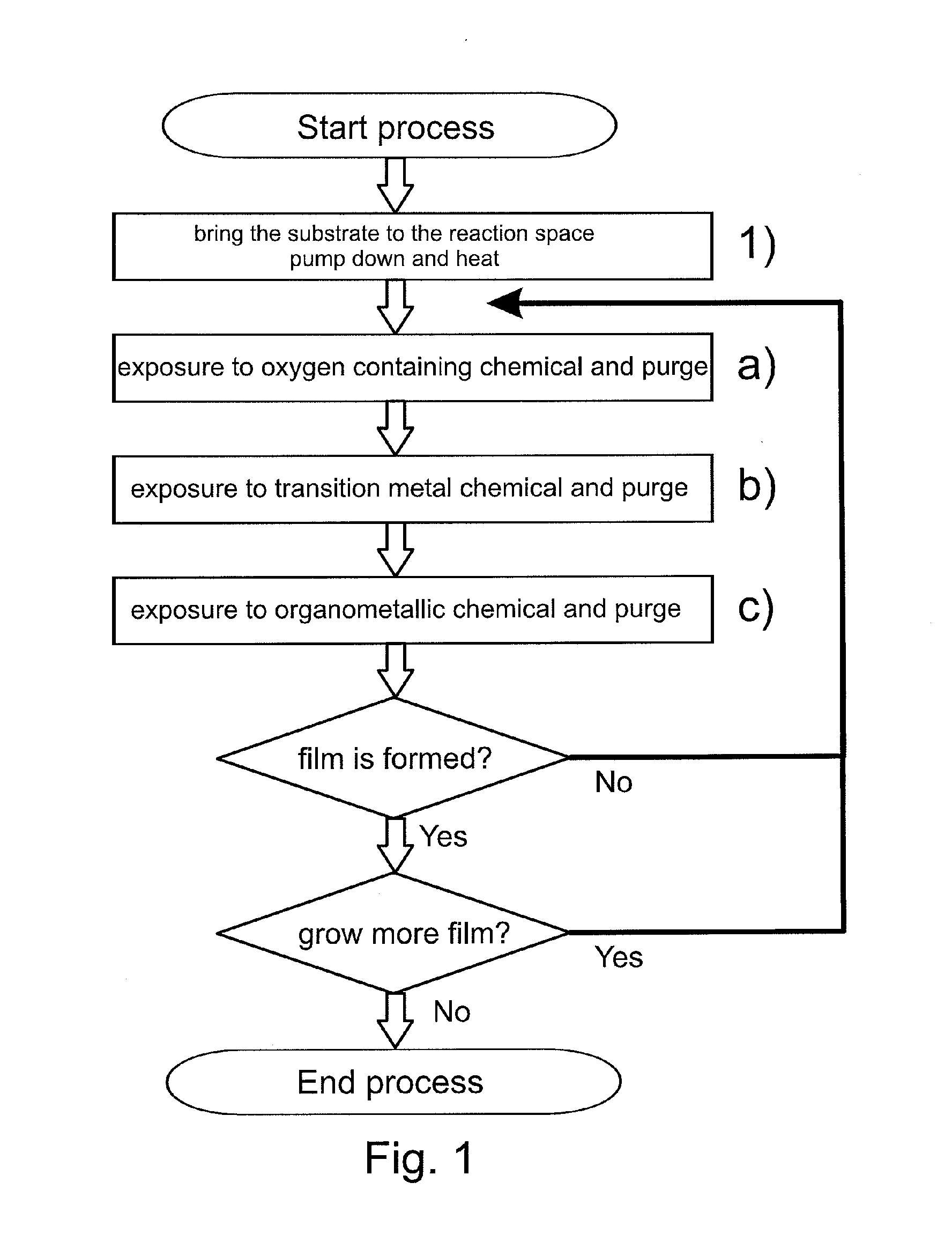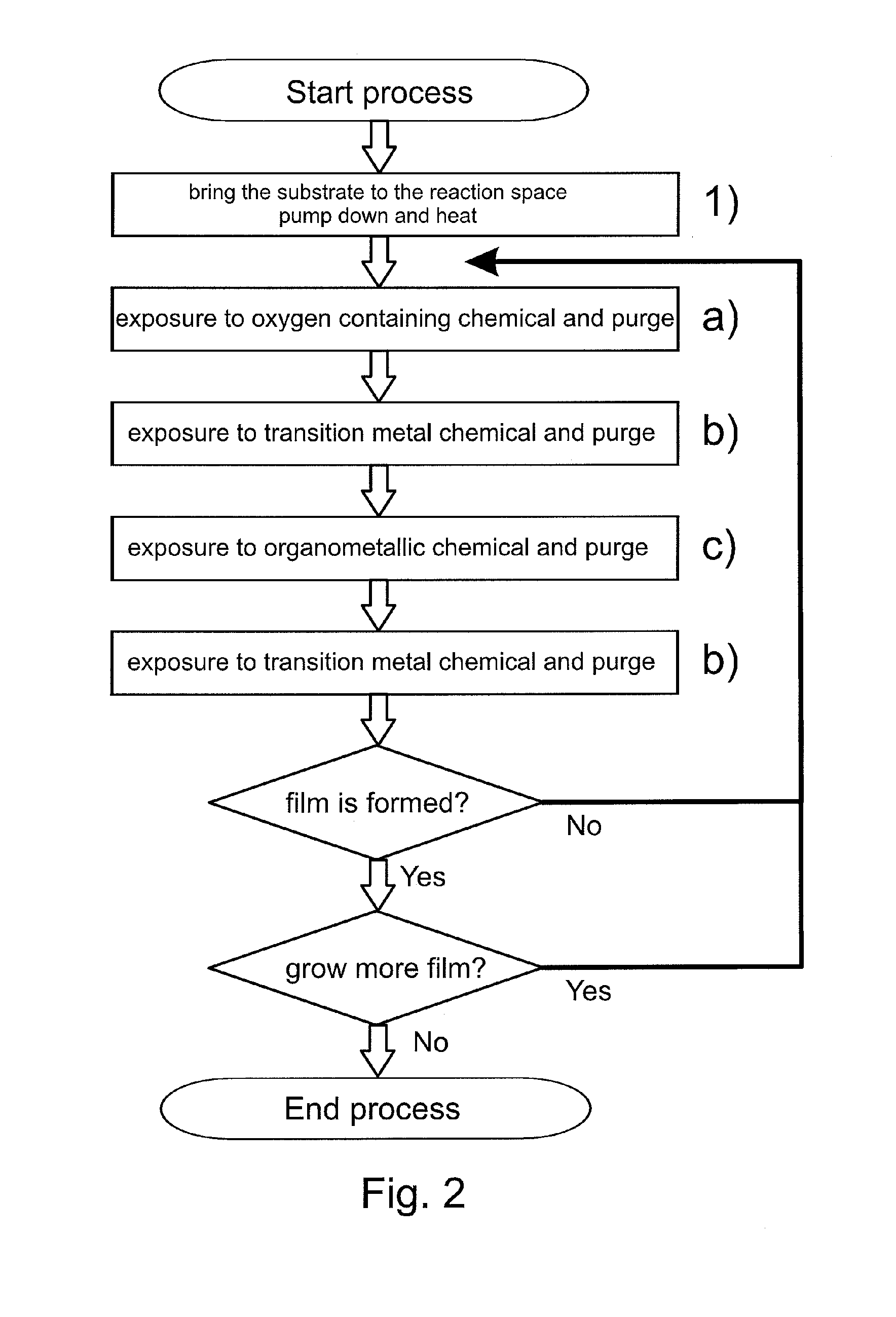Method for forming an electrically conductive oxide film, an electrically conductive oxide film, and uses for the same
a technology of electrically conductive oxide and oxide film, which is applied in the direction of oxide conductors, non-metal conductors, superimposed coating processes, etc., can solve the problems of poor uniformity and homogeneity of coating poor electrically conductive oxide films that have not been demonstrated using ald, and poor ability to uniformly and homogeneously coat non-planar surfaces and substrates with complex shapes. , to achieve accura
- Summary
- Abstract
- Description
- Claims
- Application Information
AI Technical Summary
Benefits of technology
Problems solved by technology
Method used
Image
Examples
example 1
[0066]According to the first embodiment of the invention (see FIG. 1) electrically conductive oxide films were formed on substrates using different processing temperatures. Visibly essentially transparent D263T glass substrates with a thickness of 0.3 mm (available from Schott AG, Germany) were first inserted inside the reaction space of a P400 ALD batch tool (available from Beneq OY, Finland). The substrates were planar to enable e.g. reliable optical transmission measurements. The substrates were positioned inside the reaction space such that the bottom side of the substrate glass was masked to enable film growth only on the top side, which was exposed to the surrounding reaction space. In this example the carrier gas discussed above and responsible for purging the reaction space was nitrogen (N2).
[0067]After preparations for loading the substrates into the ALD tool, the reaction space of the ALD tool was pumped down to underpressure and a continuous flow of carrier gas was set to...
example 2
[0076]Electrically conductive oxide films were formed on substrates according to the second embodiment of the invention (see FIG. 2). Visibly essentially transparent D263T glass substrates with a thickness of 0.3 mm (available from Schott AG, Germany) were first inserted inside the reaction space of a P400 ALD batch tool (available from Beneq OY, Finland). The substrates were planar to enable reliable optical transmission measurements. The substrates were positioned inside the reaction space such that one side of the substrate glass was exposed (i.e. the other side of the substrate glass was masked) to the surrounding reaction space. In this example the carrier gas discussed above and responsible for purging the reaction space was nitrogen (N2).
[0077]After preparations for loading the substrates into the ALD tool, the reaction space of the ALD tool was pumped down to underpressure and a continuous flow of carrier gas was set to achieve the processing pressure of about 1 mbar (1 hPa)...
example 3
[0085]FIG. 6 presents transmission data obtained from an electrically conductive oxide film formed according to the first embodiment of the invention (sample 191 of FIG. 6). This electrically conductive oxide film was formed at a processing temperature of 280° C. with the procedure identical to example 1, with the exception that the sequence a), then b), then c) was carried out once and then repeated 1999 times.
[0086]As can be inferred from FIG. 6 the film exhibit relatively uniform optical absorption in the visible part of 400-750 nm of the electromagnetic spectrum.
[0087]Although the adsorption reactions responsible for film growth in this example are not completely understood, test runs indicated that the chemical adsorption reactions were self-limiting to at least some extent. This resulted in very conformal and uniform films over large areas of the surface and even over complex non-planar surfaces.
[0088]Further, the thickness of the film formed was about 220 nm (using the above ...
PUM
| Property | Measurement | Unit |
|---|---|---|
| thickness | aaaaa | aaaaa |
| pressure | aaaaa | aaaaa |
| pressure | aaaaa | aaaaa |
Abstract
Description
Claims
Application Information
 Login to View More
Login to View More - R&D
- Intellectual Property
- Life Sciences
- Materials
- Tech Scout
- Unparalleled Data Quality
- Higher Quality Content
- 60% Fewer Hallucinations
Browse by: Latest US Patents, China's latest patents, Technical Efficacy Thesaurus, Application Domain, Technology Topic, Popular Technical Reports.
© 2025 PatSnap. All rights reserved.Legal|Privacy policy|Modern Slavery Act Transparency Statement|Sitemap|About US| Contact US: help@patsnap.com



